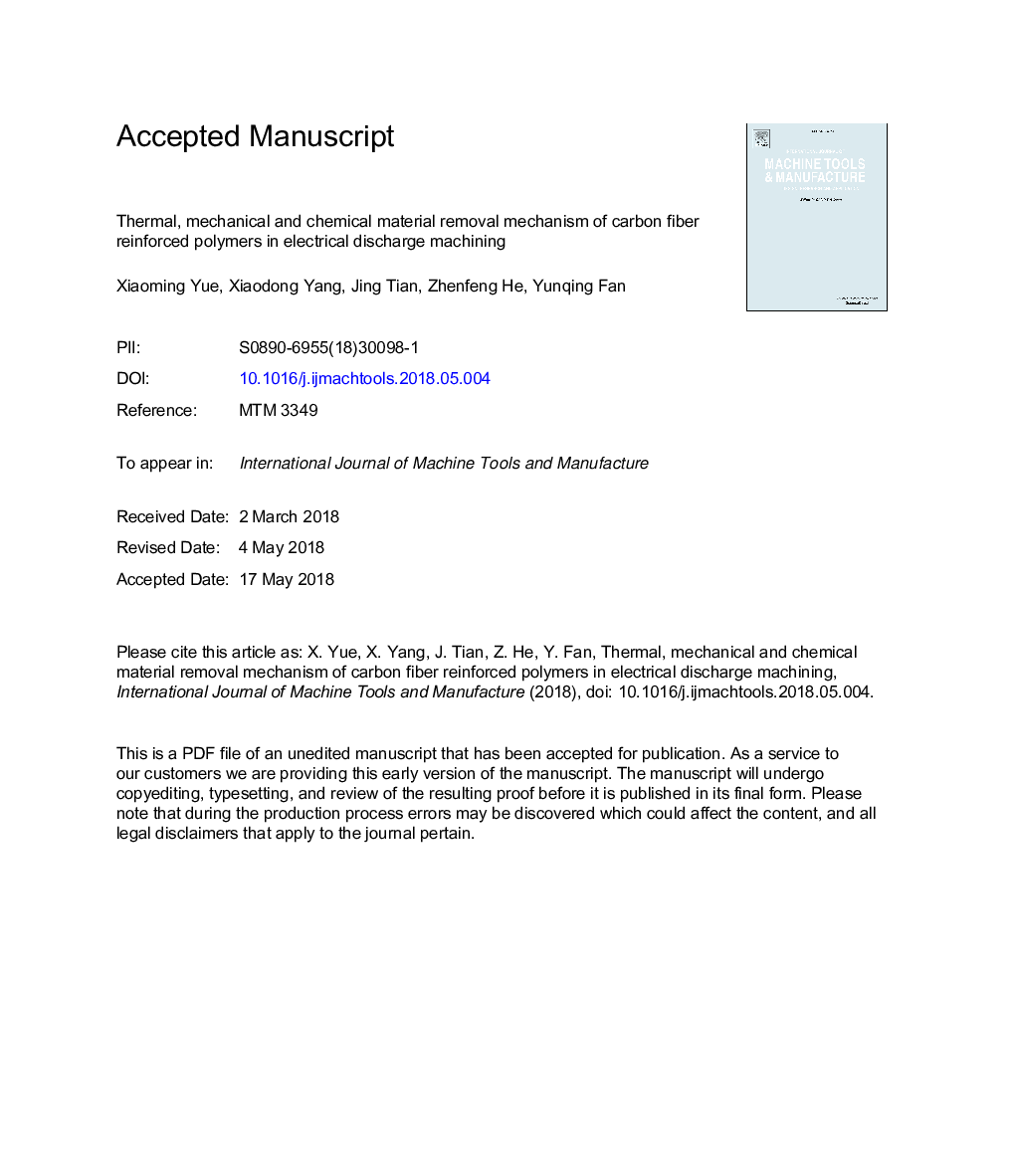| Article ID | Journal | Published Year | Pages | File Type |
|---|---|---|---|---|
| 7173319 | International Journal of Machine Tools and Manufacture | 2018 | 35 Pages |
Abstract
Electrical discharge machining (EDM) has been proved to be a feasible way to machine the carbon fiber reinforced polymers (CFRPs); therefore, understanding the material removal mechanism of CFRPs by EDM is significantly important for optimizing the machining process and improving the machining surface quality. However, very few researches to reveal the above mechanism exist. To address this issue, this paper investigated on the material removal mechanism of CFRPs by EDM from thermal, mechanical and chemical respects. The heat conduction analysis (thermal aspect) was carried out to study the temperature distribution during the discharge process of CFRPs, which shows that CFRPs could be removed through the thermal decomposition and vaporization of the epoxy resin and the sublimation of the carbon fibers under ultra-high temperature caused by the plasma heat and Joule heat. On the other hand, a high-speed camera with a laser bandpass filter added in front of the camera lens to filter out the plasma was used to directly observe the discharge process of CFRPs without the interfere of the plasma, which shows that massive high-speed jets were emitted into the gap in the discharge process, producing the jetting force (mechanical aspect). Specifically, when the discharge occurred on the parallel surface of CFRPs, the carbon fibers were crashed by the jets whose motion direction was vertical to the arrangement direction of the carbon fibers, then removed by the jetting force. However, when the discharge occurred on the vertical surface, the jetting force was not the main way of the material removal of CFRPs. Moreover, the experiments were carried out in both deionized water and EDM oil to investigate the chemical removal mechanism. It was found that in the discharge of CFRPs with the oxygen environment, the oxidation reaction could not only generate extra heat but also enhance the jetting force, thus, reaching a much higher material removal rate.
Keywords
Related Topics
Physical Sciences and Engineering
Engineering
Industrial and Manufacturing Engineering
Authors
Xiaoming Yue, Xiaodong Yang, Jing Tian, Zhenfeng He, Yunqing Fan,
